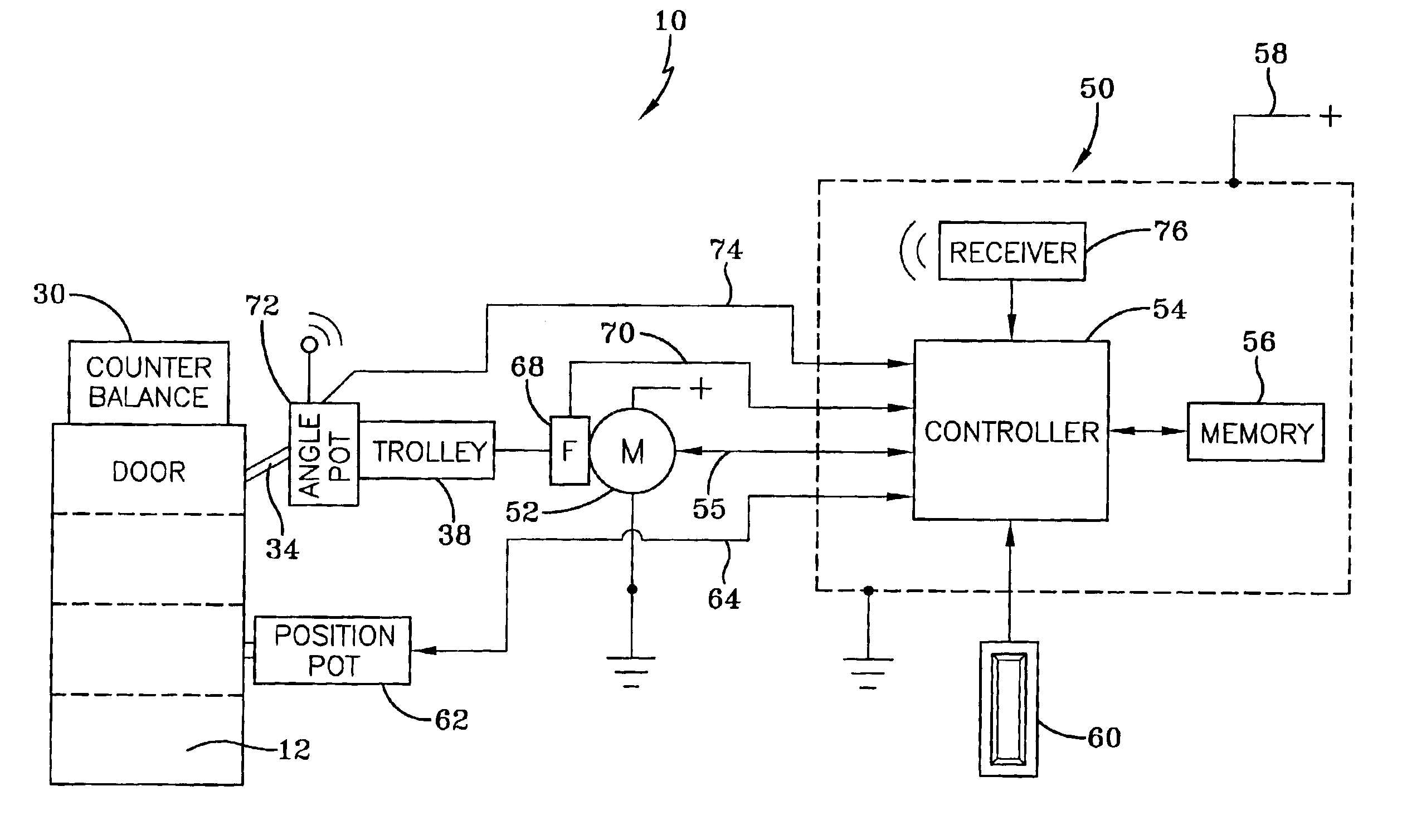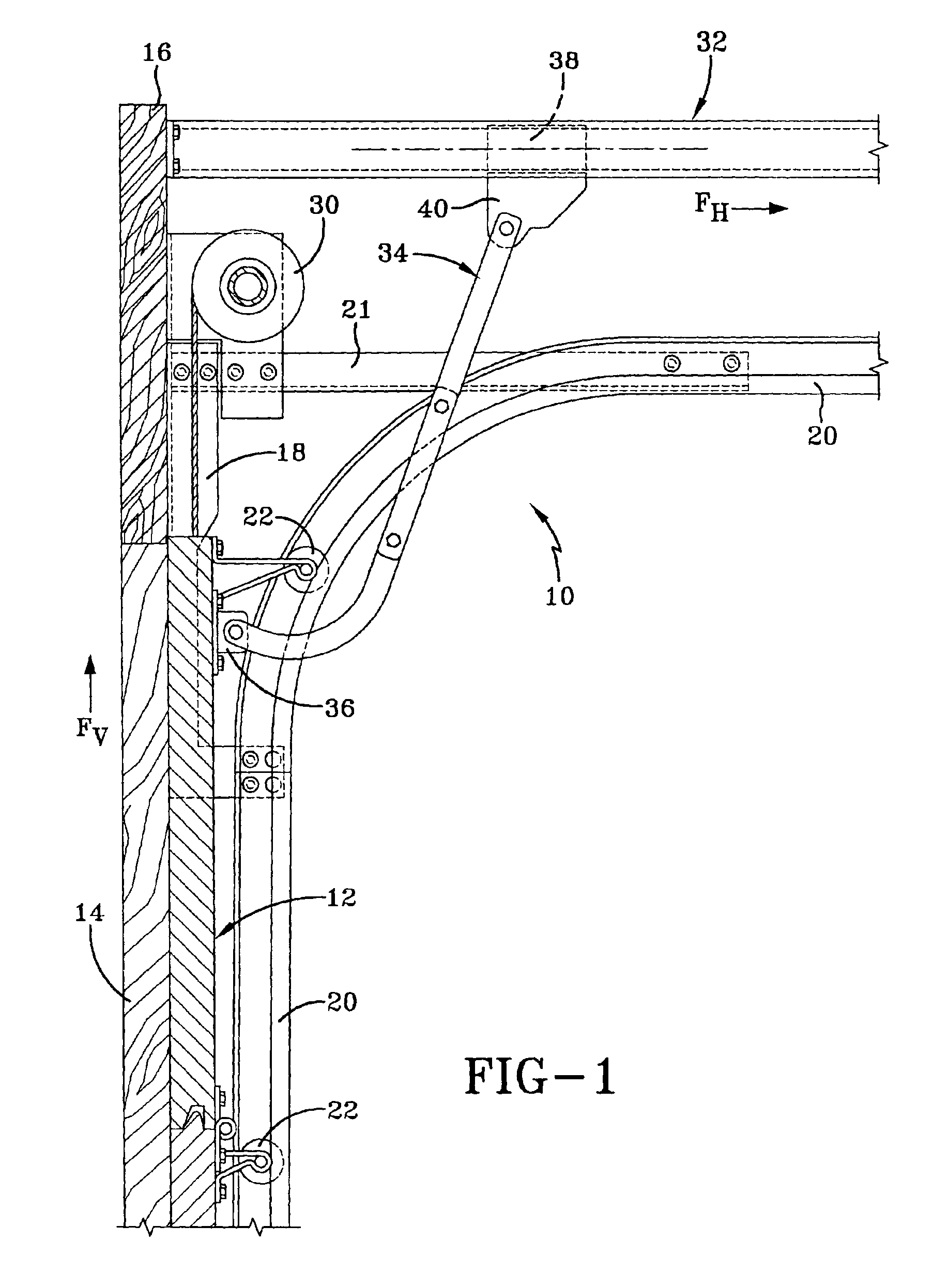System and related methods for sensing forces on a movable barrier
a technology of sensing force and movable barrier, which is applied in the direction of motor/generator/converter stopper, dynamo-electric converter control, instruments, etc., can solve the problems of affecting the speed of the door, the inability of the pulse counter to accurately keep count, and the inability of the microprocessor to also lose coun
- Summary
- Abstract
- Description
- Claims
- Application Information
AI Technical Summary
Problems solved by technology
Method used
Image
Examples
Embodiment Construction
[0031]A system and related methods for sensing forces on a movable barrier is generally indicated by the numeral 10 in FIGS. 1 and 2. As best seen in FIG. 1, the system 10 is employed in conjunction with a conventional sectional garage door, generally indicated by the numeral 12. The present invention may also be employed for use with gates, windows, retractable awnings or other closures directly connected to a driving source such as a motorized operator. The opening in which the door 12 is positioned for opening and closing movements relative thereto is surrounded by a pair of vertically spaced jamb members 14, which are generally parallel and extend vertically upwardly from the ground (only one jamb member is shown). Jambs 14 are spaced apart and joined at their vertical upper extremity by a header 16 to thereby form a generally u-shaped frame around the opening of the door 12. The jamb members 14 and headers 16 are normally constructed of lumber or other structural building mater...
PUM
 Login to View More
Login to View More Abstract
Description
Claims
Application Information
 Login to View More
Login to View More - Generate Ideas
- Intellectual Property
- Life Sciences
- Materials
- Tech Scout
- Unparalleled Data Quality
- Higher Quality Content
- 60% Fewer Hallucinations
Browse by: Latest US Patents, China's latest patents, Technical Efficacy Thesaurus, Application Domain, Technology Topic, Popular Technical Reports.
© 2025 PatSnap. All rights reserved.Legal|Privacy policy|Modern Slavery Act Transparency Statement|Sitemap|About US| Contact US: help@patsnap.com



